A Future for Creative Youth Development

Jeff Poulin

Jeff Poulin


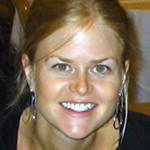 Heather Ikemire
Heather Ikemire
March 29, 2014, was the final day of the first-ever National Summit on Creative Youth Development in Boston—a national convening of more than 200 youth arts practitioners, funders, policymakers, and students designed to bring new energy and focus to creative youth development. On that day 86 individuals stood up at the John F. Kennedy Presidential Library and declared personal commitments to advancing creative youth development. I was proud to be one of them.
Read More

 Traci Slater-Rigaud
Traci Slater-Rigaud
The National Arts and Humanities Youth Program Award is the nation’s highest honor for the field of out-of-school time arts and humanities programs, particularly those that reach children and youth with tremendous potential, but limited opportunities. It is a signature initiative of the President’s Committee on the Arts and the Humanities in partnership with the National Endowment for the Arts, the National Endowment for the Humanities, and the Institute of Museum and Library Services.
Every year the President’s Committee and our cultural partners present National Arts and Humanities Youth Program Awards to 12 outstanding programs across the US and one International Spotlight Awardee. Thirty-eight finalist programs also receive certificates of excellence for their work.
Read More

 Terry Liu
Terry Liu
As an Arts Education Specialist at the National Endowment for the Arts, I am fortunate to see new blooms in the field of education. Earlier this year, I was honored to join more than 200 national, state, local, and community-based youth arts leaders for the National Summit on Creative Youth Development in Boston, sponsored by the President's Committee on the Arts and the Humanities, the Massachusetts Cultural Council, and the National Guild for Community Arts Education.
It’s exciting to have a quorum of leaders who are committed to taking creative youth development to the next level. We came with decades of experience in this field, and we left with a clear policy and advocacy agenda that our respective organizations could implement at the local, state, and national levels.
Read More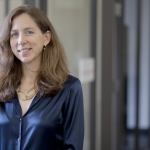

 Sarah Bainter Cunningham
Sarah Bainter Cunningham
New sustainability models break through belief barriers about the business of arts education. If teens must be employed during their high school career, why not employ them to make art? One organization pays students to participate as employees and upends assumptions about student participation. If fund-raising is challenging for smaller organizations, why not gather together tackle this beast? Another organization runs common development events for multiple arts education organizations, and upends the assumptions that local organizations must be pitted competitively against one another. Both of these examples threw out prior assumptions to create new models.
Read More

 Laura Perille
Laura Perille
Is it possible to rapidly increase the level of arts education offered in an urban district? Based on the example of the Boston Public Schools (BPS) Arts Expansion Initiative launched in 2009 by EdVestors, the BPS Superintendent, and local foundations, the resounding answer to that question is yes. This effort was rooted in the belief that arts opportunities play a powerful role in the life and learning of students in urban schools, and that a fundamental part of creating these opportunities was increasing access to quality arts education in order to create equity for all students. One of the main challenges initially faced by BPS Arts Expansion was increasing the amount of in-school arts education offered in Boston Public Schools.
Read More

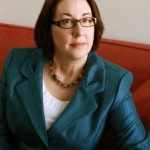 Mari Barrera
Mari Barrera
Collaborative fundraising provides nonprofits with more donors and more donations for all - $8 million in new dollars in total over a five-year period. That was the experience of the 30 youth arts organizations that participated in the ARTWorks for Kids coalition, an effort initiated and supported by Hunt Alternatives in Cambridge, MA.
How did 30 different youth arts organizations – all collaborators in serving youth in the Greater Boston area, but also competitors for donations – join forces to raise money together? First, we supported the leaders of these organizations as they worked together to build trust with their colleagues. Then, we provided a venue for each coalition member to showcase the great art their youth were producing for a large and diverse group of funders.
Read More

 Allison Ball
Allison Ball
The National YoungArts Foundation was established in 1980 with the mission to identify and recognize outstanding young artists at critical junctures in their lives—the high school to college transition. Since its founding, YoungArts (youngarts.org) has recognized over 20,000 young people through their awards programs and has provided life-changing experiences, fostered connections with colleges, professional training programs, and most importantly, provided life-long connections between young artists who go on to build artistic communities and inspire each other to imagine new artistic possibilities. YoungArts supports the development of arts and the education thereof in schools, at homes and in communities. For many alumni, their artistic possibilities have been realized with careers on the Broadway stage, Hollywood and television, opera houses and symphonies, being represented in internationally known museum collections, listings as NY Times bestsellers, and receiving Emmy, Oscar and Tony awards. The best part of these stories is that they stem out of programs consistent with CYD principles.
Read More

 Adarsh Alphons
Adarsh Alphons
The key to building support for arts education lies in the unlikeliest of places: numbers.
There is beauty in numbers. One under-emphasized aspect of arts education that holds tremendous influence in conveying its invaluable and irreplaceable role is numbers. The power of digits to specify impact (however myopic we consider that point of view) is formidable and surely, not to be underestimated. The statistics that substantiate the holistic impact of arts education are staggering. Sometimes, so much so, that even arts professionals are genuinely surprised. As an education reformer who has been advocating for arts education for over a decade, this post discusses two approaches arts organizations are using to create measurable and tangible support for arts education from funders, policy-makers and everyone else.
Read More

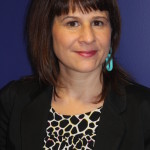 Maureen Dwyer
Maureen Dwyer
If you are reading this blog, I’m betting that you think an arts education is essential. After all, art is a necessary part of the human condition; we’ve been doing it since we dwelled in caves. But how do we prove that it’s necessary? How do we prove that we are doing it well?
These straightforward questions are not simple to answer. Many programs (and Sitar Arts Center where I work is one of them) understand the arts as essential because they are an ideal means to help young people on the path to a successful adulthood. We identify strongly with the emerging research and field known as positive youth development.
Read More

 Jennifer Abssy
Jennifer Abssy
Inner-City Arts is now in its 25th year of offering high quality arts experiences to youth. Our programs include professional development for teachers, schools and university programs, school day arts programming for K-8, and out of school programming for grades 6th grade and above. These Middle and High School Institute programs have grown from offering 5 art forms for 120 students in 2009 to today offering 15 to 22 workshops three times a year, to 600-800 urban youth. Here is what some of our Institute youth say about our programming:
“They don’t judge you here… I can be my own person.” Angelica G.
“I can count on so many people here.” Sandy A.
“These people can benefit me a lot.” Gabriel U.
“I feel loved…” Michael M.
Youth in our Institutes engage in high quality arts experiences in multiple forms such as Graphic Design, Visual Arts, Ceramics, Dance and Choreography, Acting, Spoken Word, Stand-up Comedy, Animation, Digital Photography, Guitar and Documentary Film - all located on our state of the art campus in downtown Los Angeles, near Skid Row.
Read More

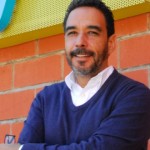 Jon Hinojosa
Jon Hinojosa
I am an Artist masquerading as an Arts Administrator - there I said it. Actually, I am a proud artist working collectively with a committed team to change lives through creative youth development. Our program, SAY Sí, recently got some positive props for being an exemplary national arts-education model that should be replicated in Something to Say, a report by the Wallace Foundation of out-of-school arts programs for tweens and teens. (By the way, please don’t use the word “tweens” in front of young people.)
Part of the reason for our success and the attention is not just the arts part, we certainly do that well – I think it is because of our assessment process and track record of accomplishments. Our youth-focused multidisciplinary arts programs: visual arts, film, performance, and (soon) game design were created not because of our interest in jumping on a funding trend (more on funding below), they were created because our youth and community told us they were needed and missing from their lives, from their city, and from their schools.
Read More

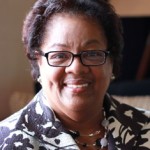 Margie Johnson Reese
Margie Johnson Reese
I am a registered card carrying bureaucrat. I don’t do passion. The job isn’t what you’re excited about; it’s what you accomplish. My staff might disagree with this self-assessment especially after summer 2014. This past summer, in less time than any organization should be given; Big Thought implemented Dallas City of Learning, an expansion on a connected learning initiative first created in Chicago. To put it simply, the Cities of Learning initiative connects students to learning opportunities based on their burgeoning interests and the peer communities those interests created, with the goal of tying those creative experiences to academic outcomes. Student achievements are codified and recognized through digital badges that contain within their code the granular information about each accomplishment.
Read More

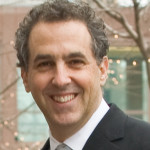 Jonathan Herman
Jonathan Herman
Young people have immense energy and a unique capacity to imagine, experiment, and take positive risks. But opportunities for them to develop their creativity and exercise these valuable qualities are in many cases limited.
Without opportunities to realize their own creative capacities, and thereby engage in the social and civic processes that directly affect their lives, young people are “at risk” of not realizing their own potential. And as a result our communities forgo the benefit of young people’s creativity, commitment, and leadership.
In an age of rapidly changing economic, social, technological, and environmental challenges (just to name a few), we need the talents of young people to help us innovate, renew, and build a brighter future.
Read More

 Denise Montgomery
Denise Montgomery
We know what quality creative youth development (CYD) programs look like through our own work, thanks to model programs, and through publications such as Engaging Adolescents, Something to Say: Success Principles for Afterschool Arts Programs From Urban Youth and Other Experts, and The Mosaic Model for Youth Development through the Arts. So let’s just implement the principles and increase the number of young people who are benefiting from such programs.
If only it were that simple.
Read More

August 4, 2014 was the 180th Birthday of John Venn. If you’ve ever sat through a PowerPoint presentation, chances are you know John’s work. A Venn Diagram is a way of visually depicting the intersection of ideas, concepts or, in the case of Creative Youth Development, sectors of work.
Read More

 Jeff Poulin
Jeff Poulin
Last week, I had the pleasure of attending the Arts Education Partnership’s annual National Forum. Aside from the connecting with arts education friends and learning tons (I mean tons!) in the sessions, I also had the opportunity to sit in on a session titled, “Fostering Student Success by Leveraging the Impact of Out of School Time, Creative Youth Development Programs.” What was great about the session was the interconnectivity of people, research and agenda from so many other national conversations which were initiated as a result of the policy and advocacy agenda produced after the first National Summit on Creative Youth Development in Boston.
Read More